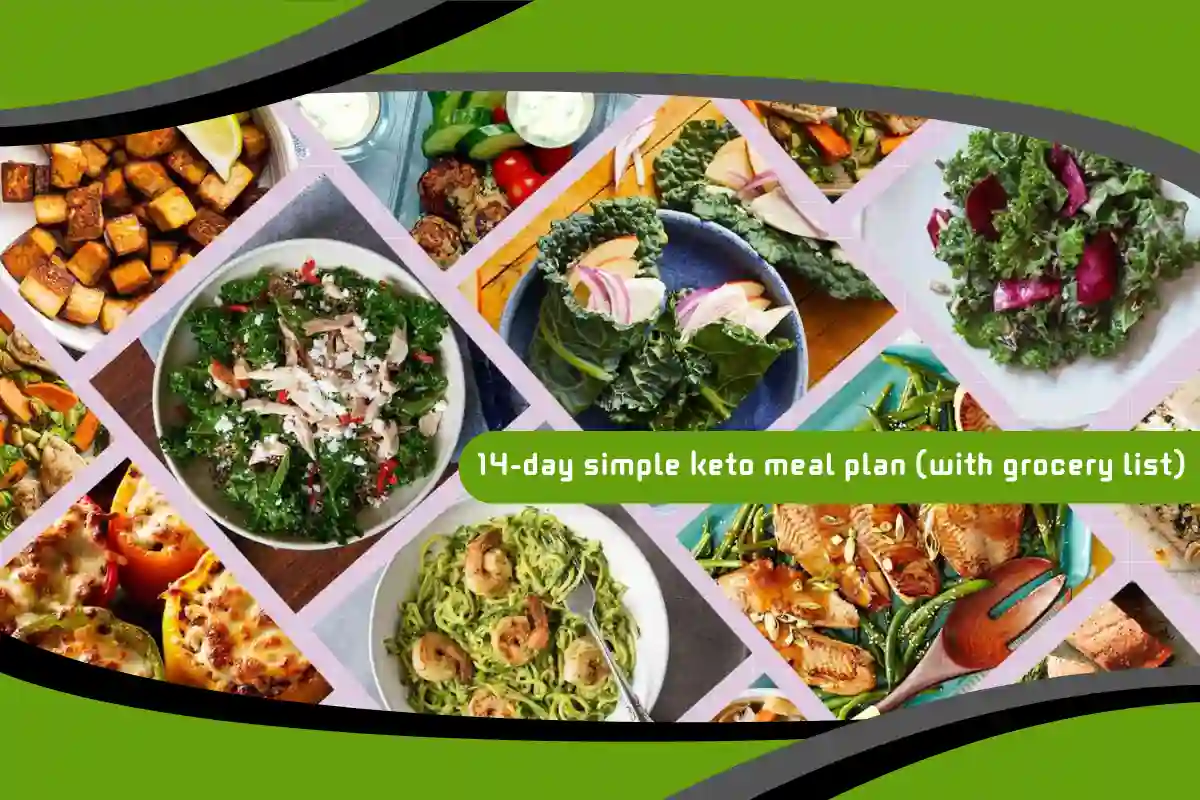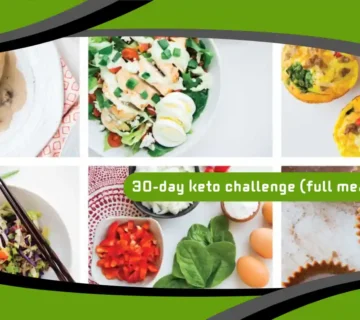The ketogenic diet, widely known as the keto diet, has taken the nutrition world by storm, offering a sustainable approach to fat loss, improved energy, and enhanced cognitive performance. For many beginners, getting started with keto can be overwhelming. This comprehensive 14-day meal plan is designed to help you confidently start your keto journey with clarity, convenience, and results. It includes not only the daily meal layout but also a complete grocery list, practical tips, and meal prep strategies to simplify your experience and boost success.

Understanding the Keto Diet Fundamentals
The keto diet focuses on drastically reducing carbohydrate intake and replacing it with fat, pushing the body into a state called ketosis. In ketosis, the body efficiently burns fat for energy, and the liver produces ketones that supply energy to the brain. This low-carb, high-fat approach has been linked to numerous health benefits, including weight loss, improved blood sugar control, and reduced inflammation.
Why Simplicity Is Key for Long-Term Success
Complexity often leads to failure in diet plans. A simple and structured approach helps individuals stay consistent and motivated. This 14-day plan avoids exotic ingredients and instead focuses on everyday whole foods, making the transition to keto both manageable and sustainable, especially for busy lifestyles.
The Role of Macronutrient Ratios in Keto
To follow a proper keto plan, understanding macronutrient ratios is crucial. Ideally, your calorie intake should consist of about 70-75% fat, 20-25% protein, and only 5-10% carbs. These ratios support ketosis and help maintain stable blood sugar levels. The following meal plan adheres strictly to this breakdown, ensuring optimal results.
Importance of Meal Planning and Prepping
Meal planning saves time, reduces decision fatigue, and helps you avoid off-plan temptations. Prepping meals in advance also ensures that you always have keto-friendly options ready to go. This 14-day plan includes practical suggestions for batch-cooking meats, chopping vegetables, and storing keto snacks for the week.
Essential Grocery List for Two Weeks
Before starting the plan, it’s important to stock your kitchen with the right ingredients. Key items include healthy fats like olive oil, avocados, butter, and nuts; protein sources such as chicken, eggs, beef, and fish; and low-carb vegetables like spinach, zucchini, broccoli, and cauliflower. Dairy products, herbs, and keto condiments round out the list.
Watch also: Back to School Keto Plan for Parents and Kids: A Complete Guide for Healthy, Low-Carb Meals
A Look at a Typical Day on the Plan
A sample day may begin with scrambled eggs in butter with spinach, followed by a lunch of grilled chicken thighs with avocado and olive oil-dressed salad. Dinner might include salmon with roasted cauliflower and a side of creamy garlic sauce. Snacks like cheese cubes, boiled eggs, or celery with almond butter fill in between meals.
Week 1: Building the Foundation
The first week focuses on stabilizing your energy levels and transitioning your body into ketosis. It’s normal to experience some fatigue or “keto flu” symptoms during this time. Stay hydrated and include plenty of electrolytes through foods like bone broth and leafy greens to ease the transition.
Week 2: Fat-Burning and Energy Boost
By the second week, most people begin to feel a surge of energy and mental clarity. The plan introduces slightly more diverse meals while still keeping prep simple. You’ll likely notice reduced cravings, especially for sugar and refined carbs, as your body adapts to fat as its primary fuel source.
Breakfast Options That Support Ketosis
Mornings on keto should be about nutrient-dense fats and moderate protein. Omelets with cheese and mushrooms, keto pancakes made with almond flour, or Greek yogurt with chia seeds and walnuts are perfect for starting the day without spiking your blood sugar.
Satisfying Keto Lunch Ideas
Lunches are an opportunity to combine proteins and vegetables in creative ways. Think lettuce wraps filled with tuna salad, zucchini noodles with creamy chicken Alfredo, or a Cobb salad loaded with bacon, avocado, and hard-boiled eggs. These meals are filling and easy to take on the go.
Delicious and Nourishing Keto Dinners
Dinner on a keto meal plan should be both comforting and rich in healthy fats. Try meals like garlic butter steak with asparagus, shrimp stir-fry with coconut oil, or chicken thighs baked with pesto and mozzarella. These options are flavorful and family-friendly.
Smart and Tasty Keto Snacks
Keeping keto snacks handy helps maintain energy between meals. Boiled eggs, olives, beef jerky, or cheese sticks are great low-carb snacks. You can also make keto fat bombs with coconut oil and cocoa powder for a sweet treat without the carbs.
Hydration and Electrolytes on Keto
Drinking enough water is essential on keto, as the body sheds more fluids. Aim for at least 2.5–3 liters of water per day, and replenish electrolytes with magnesium, potassium, and sodium. Add lemon or cucumber to your water to keep it refreshing and support digestion.
Watch also: 7-Day Keto Meal Plan for Beginners: Easy Low-Carb Recipes to Kickstart Your Weight Loss
How to Handle Eating Out or Social Events
Dining out while on keto can be simple with a few smart choices. Opt for grilled meats, bunless burgers, and side salads instead of fries. Ask for dressings and sauces on the side, and don’t be afraid to customize your order to fit your goals.
Monitoring Your Progress and Adjustments
Track your meals, how you feel, and any physical changes to stay motivated. Use apps to log food intake and monitor ketone levels. If you hit a plateau, consider adjusting fat intake or trying intermittent fasting to boost results.
Common Keto Mistakes to Avoid
Mistakes like eating too much protein, consuming hidden carbs, or not drinking enough water can hinder progress. Avoid processed “keto” products loaded with preservatives, and focus on whole, nutrient-dense foods. Proper education and planning are key to avoiding setbacks.
Supplementing Your Keto Diet
Although whole foods should be your main source of nutrients, some supplements can support your keto lifestyle. Magnesium, omega-3 fatty acids, MCT oil, and a high-quality multivitamin may be beneficial, especially during the adaptation phase.
Reintroducing Carbs After the Plan
After the 14 days, if you choose to reintroduce carbs, do so gradually. Start with nutrient-rich options like sweet potatoes or quinoa in small portions. Monitor how your body responds and decide whether you want to continue with keto, transition to low-carb, or adopt a cyclical keto approach.
Long-Term Benefits and Lifestyle Integration
Keto can be more than just a short-term diet. Many people choose to follow it as a long-term lifestyle, enjoying benefits such as stable energy, reduced cravings, and improved biomarkers. With the right mindset and tools, keto can become a sustainable part of your health journey.
Final Thoughts on Your Keto Kickstart
Embarking on a keto diet can seem challenging, but with the right guidance and planning, it becomes a powerful tool for improving health. This 14-day meal plan provides a strong foundation for beginners and sets the stage for long-term success. Stick to the plan, stay consistent, and celebrate your progress as your body adapts and transforms.
Watch also: 30-Day Keto Challenge: Complete Meal Plan, Benefits & Expert Tips for Guaranteed Results



No comment